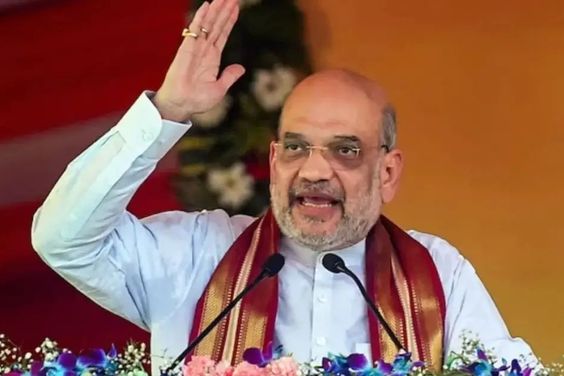India is the largest producer of milk in the world, contributing 24% of global milk production in 2021-22. The top 5 milk-producing states are Rajasthan, Uttar Pradesh, Madhya Pradesh, Gujarat and Andhra Pradesh. They together contribute 53.11% of total Milk production in the country. India is positively evolving not only in one sector but in every industry by encouraging Indian farmers mainly women farmers into the Indian Dairy Sector with the launching of Standard Operating Procedures (SOPs) under ‘White Revolution 2.0’ and ‘Cooperation among Cooperatives,’ aims at boosting the cooperative sector’s productivity and reach, along with ‘Margdarshika’ for the formation and strengthening of 2 lakh new MPACS, Dairy and Fishery Cooperatives by Union Home and Cooperation Minister Amit Shah on 19 SEP 2024 in New Delhi on the initiatives undertaken by the Ministry of Cooperation in the first 100 days of the third term of Prime Minister Shri Narendra Modi led NDA government.
The Formation of Margdarshika
The launch of ‘Margdarshika’ aims to create and strengthen 2 lakh MPACS, dairy, and fishery cooperatives across India, every panchayat in the country will soon have at least one PACS or cooperative society with this decentralized approach will help boost grassroots cooperative activities, bringing prosperity to remote areas and the sector will reach new heights once these two lakh primary cooperative societies are registered adding that this move will strengthen cooperative institutions at the tehsil, district, and state levels.
About White Revolution
India’s national dairy development effort was called The White Revolution or Operation Flood by Verghese Kurien, an agricultural scientist, who started it in 1970. This revolution’s main goals were to make milk more widely available at affordable prices enhancing the standard of living for small farmers who relied on agriculture for a living. Previously unemployed unskilled labourers will now have jobs thanks to this revolution, which also rebuilt rural infrastructure.
In 2024 The Standard Operating Procedures (SOPs) for ‘White Revolution 2.0’ launched highlight the instrumental in empowering women in rural areas, as a significant number of women are involved in dairy production, particularly through cooperative dairies. This initiative will enhance the self-reliance and financial independence of these women, providing them with new economic opportunities. The programme will focus on four key areas – empowering women farmers, enhancing local milk production, strengthening dairy infrastructure, and boosting dairy exports.
In Gujarat, where 36 lakh women are involved in the dairy sector with a combined business turnover of Rs 60,000 crore, cooperative dairies have the potential to lift millions of women out of poverty. Amul, one of the most well-known names in dairy brands stands as a testament to the success of India’s dairy cooperatives White Revolution 2.0 will not only empower women but also contribute to dealing against malnutrition by increasing milk production will provide essential nutrition to children, particularly in malnourished and impoverished communities.
Benefits of New Initiatives Taken by the Government
- The plan will leverage the benefits of existing programmes, including the Dairy Processing and Infrastructure Development Fund (DIDF), National Programme for Dairy Development (NPDD), as well as proposed schemes NPDD 2.0 of the Department of Animal Husbandry& Dairying to achieve its objective.
- The nationwide rollout of RuPay Kisan Credit Cards for dairy farmers and the installation of micro-ATMs at dairy cooperative societies.
- Dairy cooperatives will procure 100 million kilograms of milk a day by the end of the fifth year of the initiative, this will significantly enhance the livelihoods of rural producers.
What is Cooperation Among Cooperatives?
Another major highlight of the conference was the launch of the initiative ‘Cooperation among Cooperatives,’ aimed at fostering collaboration between cooperative institutions. Amit Shah shared the results of experiments conducted in Gujarat’s Panchmahal and Banaskantha districts, where cooperative sector institutions opened bank accounts in cooperative banks. Debit and credit cards were issued to women involved in milk production to empower them financially with over 4 lakh bank accounts have been opened, and deposits of more than Rs 550 crore have been made across just two districts.
The initiative will now be expanded to the national level focusing on strengthening cooperative activities in districts where the cooperative movement has traditionally thrived, the Ministry of Cooperation has developed a comprehensive database of cooperative societies across India, that will make it easier to monitor their performance and support their development.
Export Potential
India as a global leader in dairy production, Amit Shah underlined the potential for further growth and also added that India no longer needs to rely on imported dairy machinery, as the country is on track to produce all necessary dairy-related equipment domestically. The government’s commitment will provide full budgetary support to these initiatives strengthen cooperative institutions, empower rural women, and drive growth in the dairy sector, looking forward to creating a more prosperous and self-reliant India.
Economic Impact
The dairy industry accounts for about 40% of India’s agricultural output and provides livelihoods for more than 85 million people. Around 63% of the milk produced reaches the market, with the majority coming from the unorganised sector, while cooperatives control most of the organised sector. White Revolution 2.0 is designed to build on past achievements. It aims to improve milk production, increase economic opportunities, and uplift rural communities, especially women, by empowering them through cooperative movements.
Emphasising the need for reforms were reforms in different sectors in the country in the past 70 years that established a separate cooperation ministry to revive and modernise the cooperative sector and create job opportunities with these initiatives, the government aims to strengthen and expand the cooperative sector, potentially benefiting about 13 crore farmers nationwide.
































